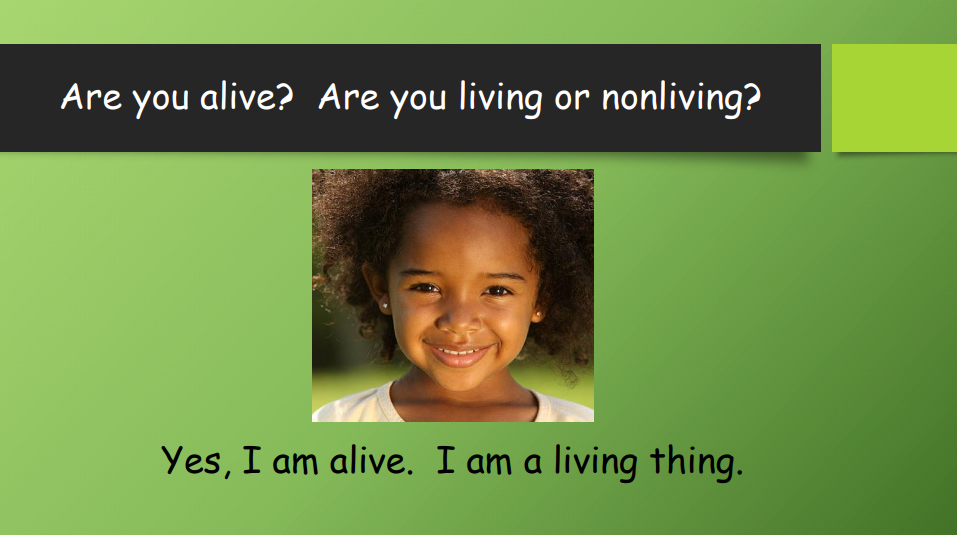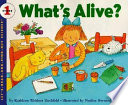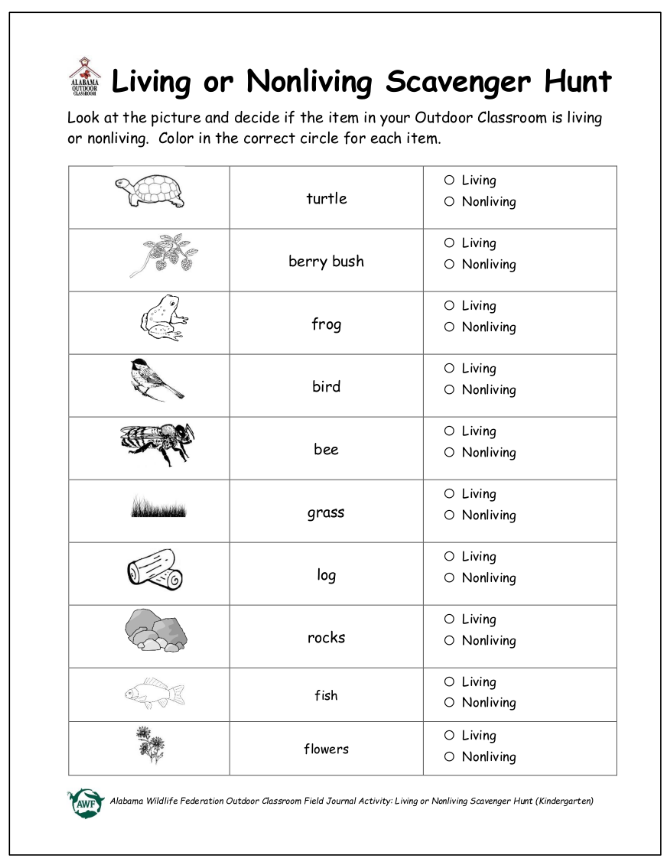Menu







Students learn how to identify and compare living and non-living things, and then use these patterns to analyze their observations in the outdoor classroom.
Click on the orange links to access free educational materials:
Lesson Plans | ALSDE Standards Taught
Activity Page: (Word Doc / PDF) with Answer Page
Outdoor Activity Materials: activity pages, clipboards, pencils (garden trowels & magnifying glasses optional)

Engage the students and capture their interests with an Interactive Q&A (or as PDF) that allows you to click through the questions one at a time. You can gauge your students’ understanding of the topic as they answer the questions.
Print and use the Q&A Info Sheet (or as Word Doc) to anticipate the next question in the Interactive Q&A and to guide the conversation with the students. (Note: For the PowerPoint (PPT), click “Slide Show” & “From Beginning” to display the questions and answers separately.)
Use these tools to continue the discussion:

As you read this book, you can further explore the topic and discuss your students’ experiences and knowledge around the topic:
What’s Alive? (Let’s Read & Find Out Science Series: Level 1) by Kathleen Weidner Zoehfeld
(ISBN: 978-0064451321)

Use these educational videos to help explain the topic in more detail:
Use this educational video to help explain the topic in more detail:
Sesame Street’s “Who’s Alive?” (3:15 min.)
@ https://www.youtube.com/watch?v=giWqEPNLtBo
Students apply what they have learned as they investigate the topic in your outdoor classroom and record their real-world observations on their Living of Nonliving Field Investigation Activity Page (or as Word Doc).
Activity Tips
Procedure
Outdoor Discovery:
Indoor Discussion:
Optional Extension:
Review and assess the students’ observations and answers on their activity page: Answer Page
Evaluate the students’ understanding of the topic with one of the following assessment tools:

Questions? Contact us at oc@alabamawildlife.org.
Website Design and Digital Marketing by